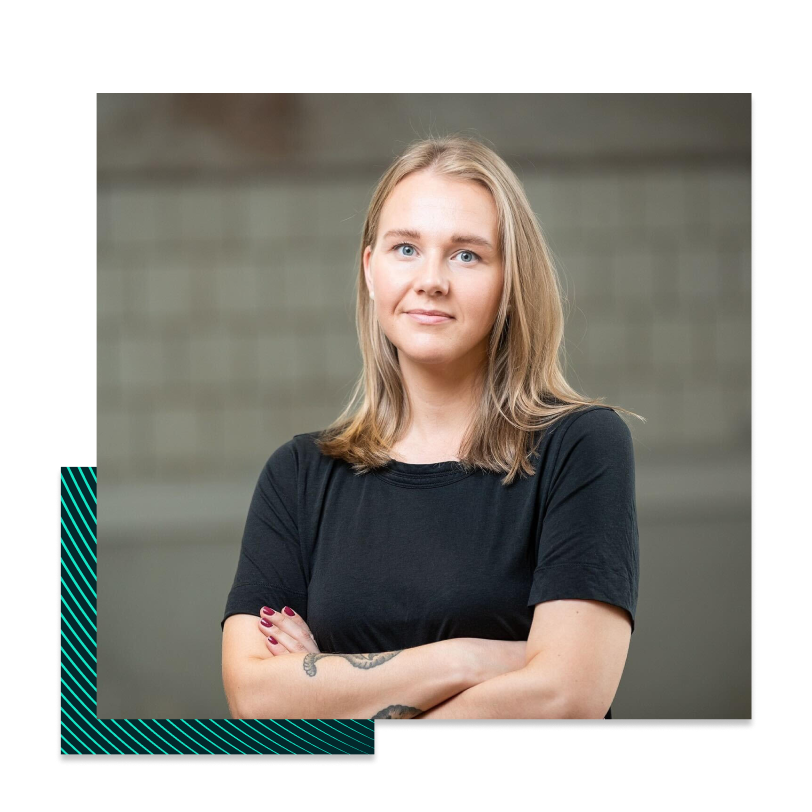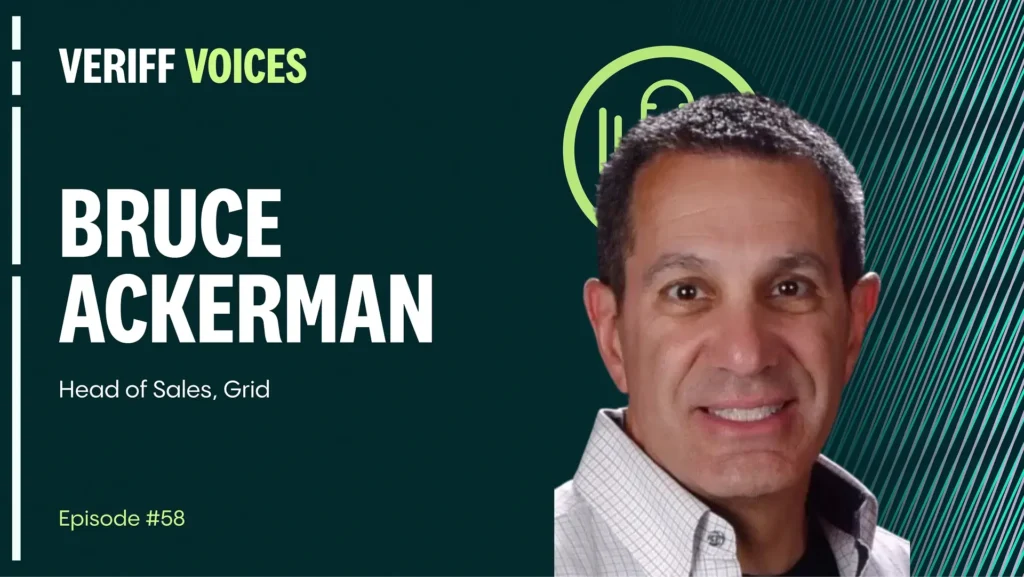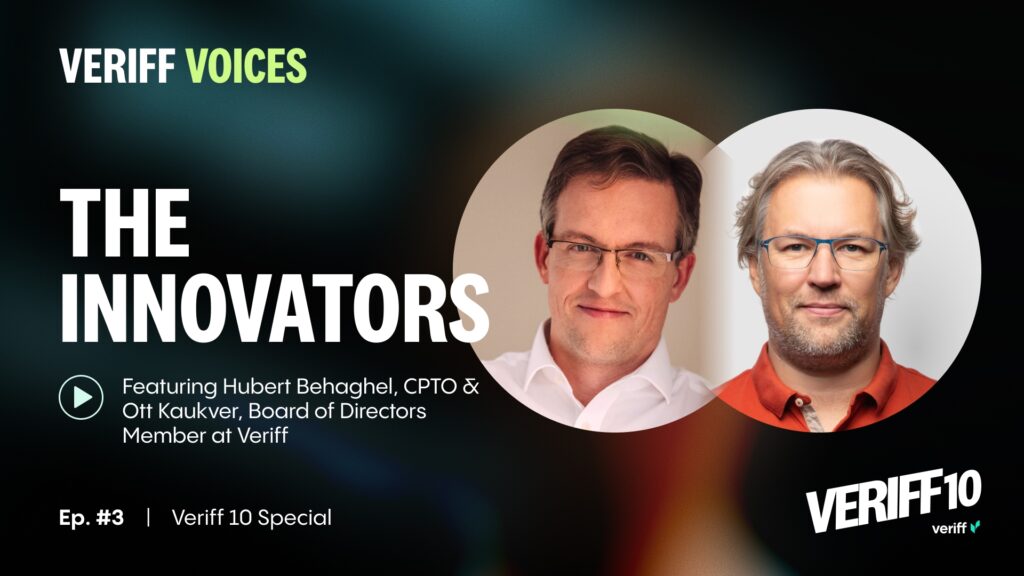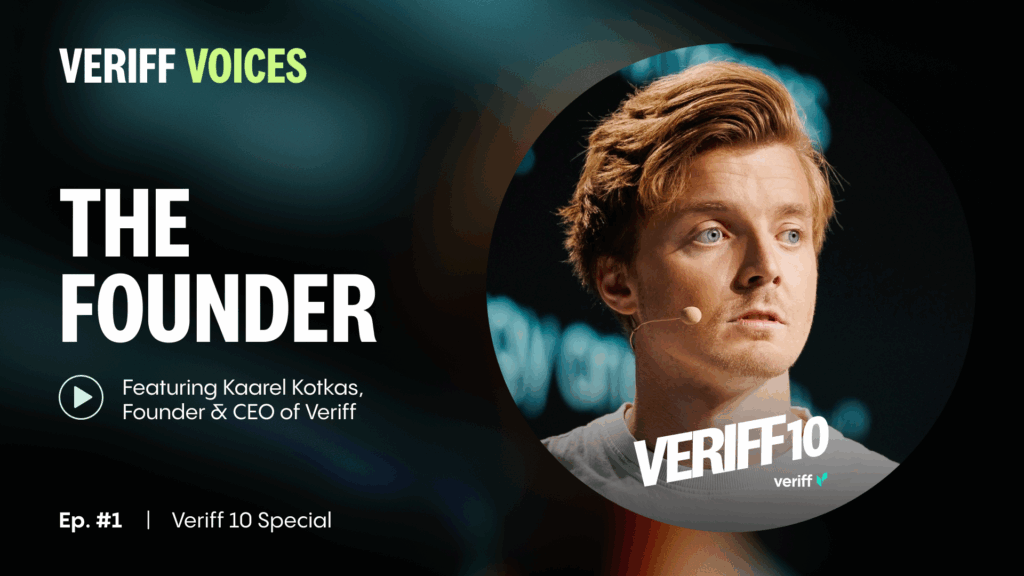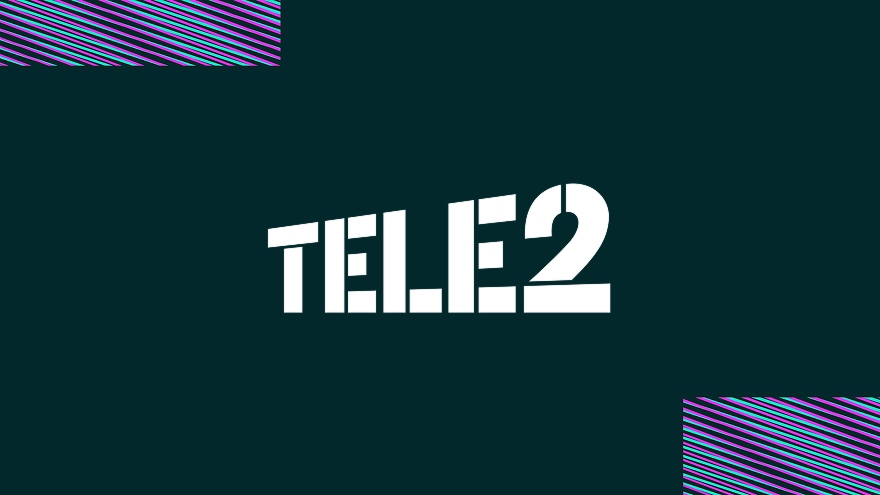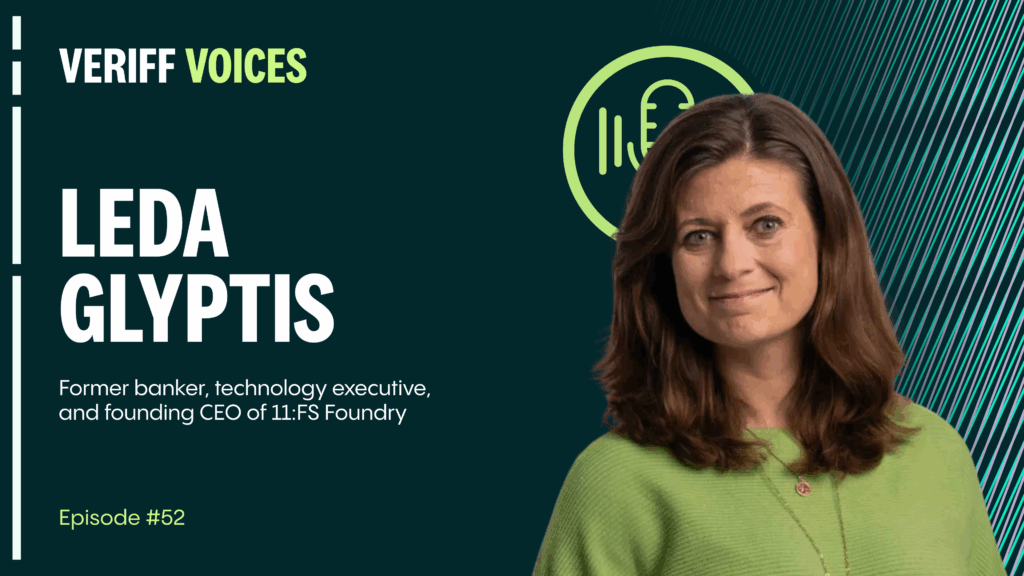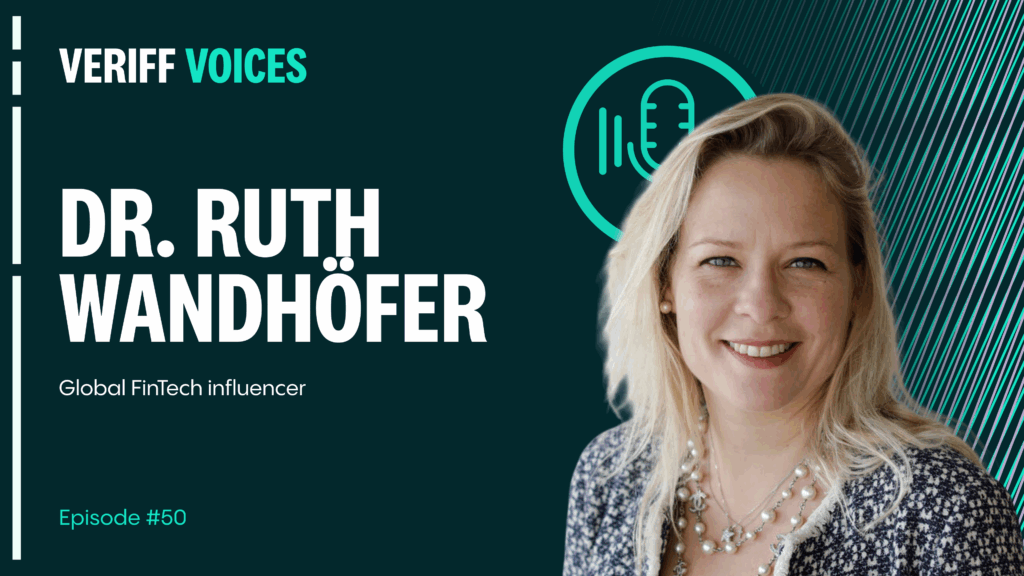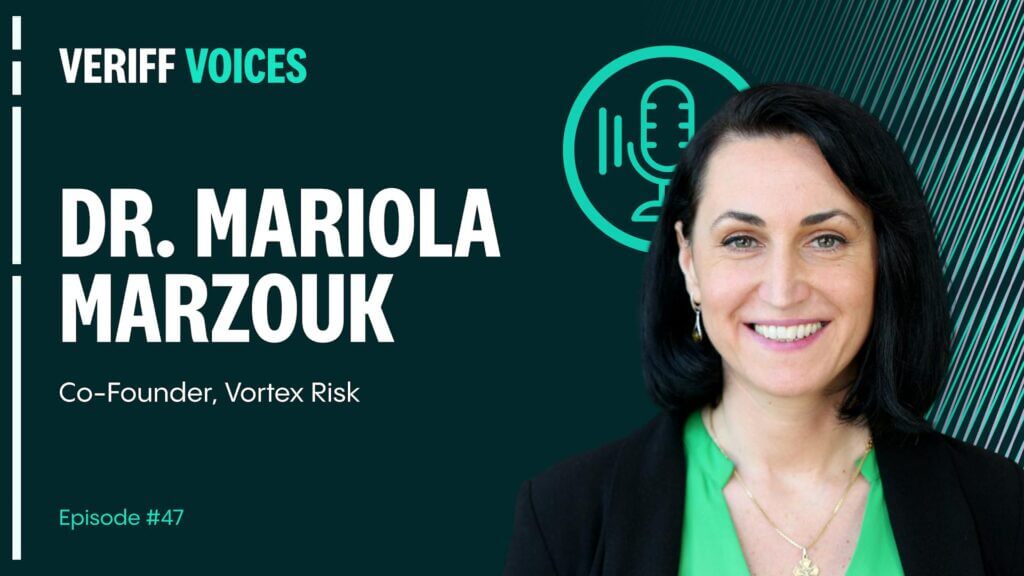Podcast
The believers who bet on trust: how early backers helped Veriff find its edge
In the second episode of Veriff 10 podcast series, our host Anisah Osman Britton sits down with Taavi Kotka and Rainer Sternfeld, the early believers of Veriff.

Every enduring company has its “believers:” the people who see possibility before the world does. For Veriff, two of those voices are Taavi Kotka, IT visionary, entrepreneur, and digital transformation advocate, and Rainer Sternfeld, engineer, entrepreneur, and investor. In this anniversary episode, they look back at why they invested their time, capital, and reputations in a 20-something founder with a big idea, and how that idea grew into a global mission to restore trust to the internet.
Why this problem and why now
In Estonia, the question of “who is behind the device” has been effectively answered for decades. Digital identity is part of daily life: citizens sign, bank, and vote online. That context made Veriff’s founding challenge feel obvious and urgent to early Estonian backers: the rest of the world needed a reliable way to know who’s on the other end.
Taavi first encountered Veriff when the technology lived inside a small Estonian bank. He helped support the buyout that made Veriff an independent company. What convinced him wasn’t just the need, it was the pathway: “There was still a lot of human work in the process,” he recalls. “But as engineers, we knew this could be automated, new documents, new countries, new checks, step by step, you could fully automate it.”
Rainer met Kaarel in San Francisco during the 2018 Y Combinator winter batch, right as the Cambridge Analytica revelations hit the headlines. Timing mattered. “It became obvious a trusted ID system shouldn’t be owned by a big platform,” he says. “Trust would have to come from an independent third party.”
The founder, the market, and the moment aligned.
The founder factor
Both investors highlight the same paradox: Kaarel is notably humble in person and relentless in execution. Taavi laughs about a nickname that stuck in Estonia: “Cap table Kaarel.” The point isn’t bravado, it’s that Kaarel is unusually disciplined about protecting employees, option holders, and the company’s long-term control. That discipline extended to dealmaking. When a very attractive early offer came, many advised taking it. Kaarel said no. “It was brave,” Taavi says. “And in hindsight, it was right.”
Rainer was drawn to the same combination of intensity and clarity. “For me, it’s always founders first, then market, then product,” he says. “Kaarel had the drive, and he was laser-focused on the one thing that mattered: make identity verification accurate, fast, and independent.”

Kaarel had the drive, and he was laser-focused on the one thing that mattered: make identity verification accurate, fast, and independent.
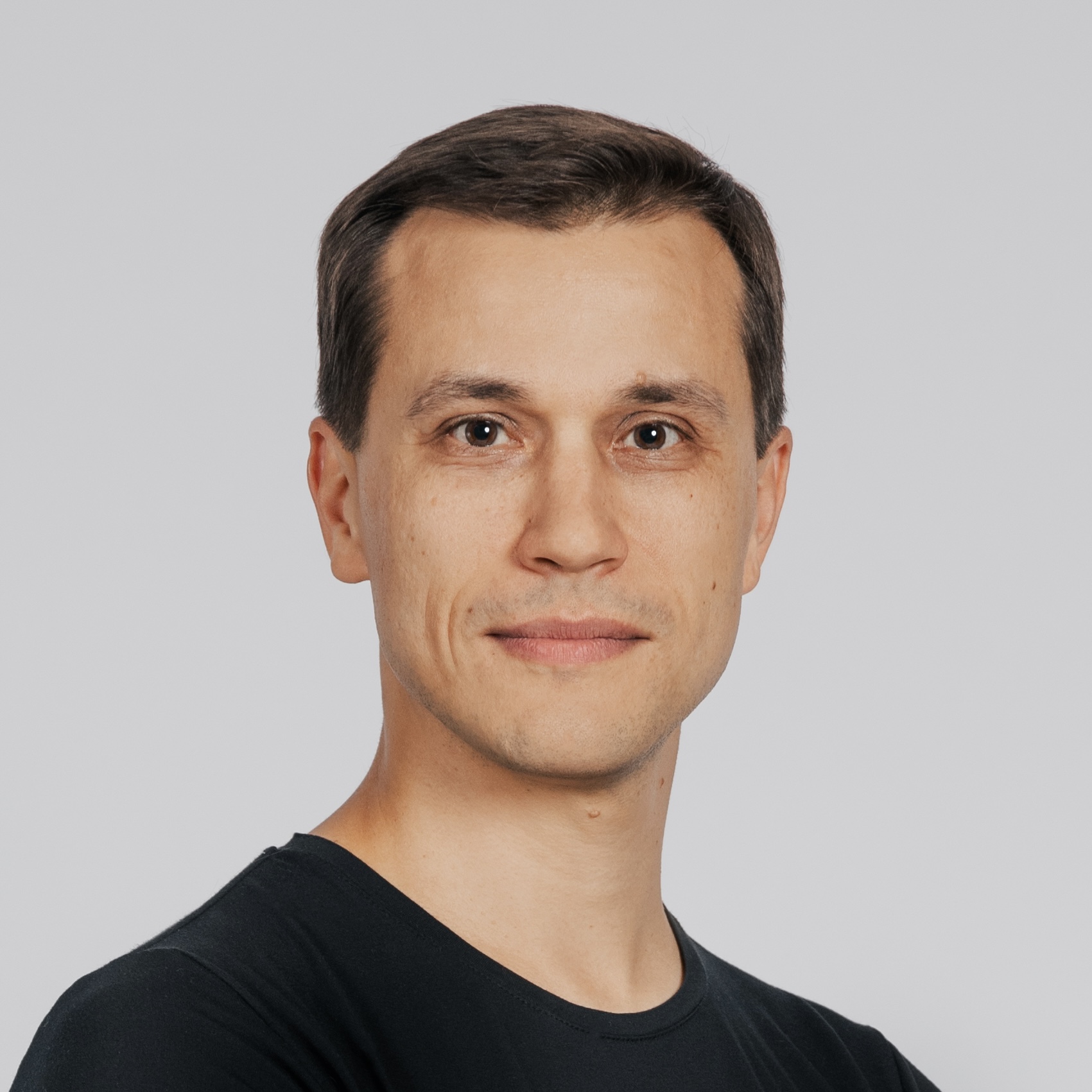
From slides to systems
Belief, of course, has to translate into building. Rainer’s fund, Nordic Ninja, invested in spring 2020, during the first lockdown. He also rolled up his sleeves in a different way, helping shape Veriff’s Series B story. “They had 200 slides and were too deep in it,” he jokes. “We spent a week in the office every evening, tightening the narrative that’s still in use today.”
But the real proof came in production metrics. During COVID, when some providers struggled, two numbers stood out to Rainer:
- Automation rate: how much of the flow is handled without humans.
- Median resolution time: how quickly a verification is completed.
“Many competitors’ automation claims didn’t hold up under lockdown,” he says. “Veriff’s did. The system stayed up, the times stayed fast. We’ve tracked those metrics ever since.”
Taavi, ever the systems thinker, adds a broader lens. Markets with real stakes, payments, signatures, identity, often fragment over time. Yet, he notes, Veriff keeps being chosen even by companies that buy competitors’ suites. “Focus wins,” Rainer agrees. “Do IDV better than anyone. Then build from there.”
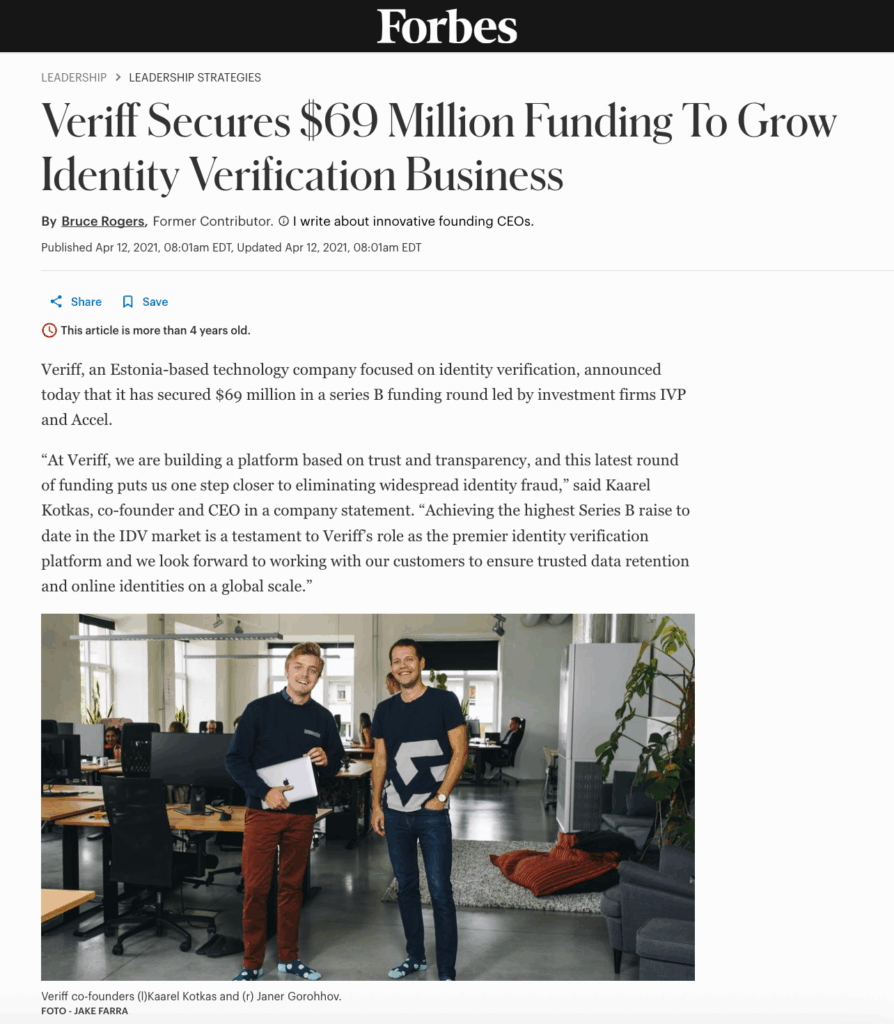
The Estonia effect
Being Estonian didn’t guarantee anything but it helped. A nation that treats digital identity as critical infrastructure naturally produces founders who see identity as a first-order problem, not a bolt-on. It also produces tight-knit backer networks. In a small ecosystem, people wear multiple hats and help however they can: “You don’t have enough people to specialize,” Rainer says. “So you pitch in.”
Taavi puts it simply: credible investors with deep operating backgrounds send a signal to early employees that the work matters. “Even if sales isn’t perfect yet, or the product still needs iteration, the right investor list tells the team they’re on a serious ride.”
The inflection points and near-misses
Not every moment was preordained. Taavi admits he once urged an early sale: the idea seemed so copyable that a tech giant could have swallowed the market. What changed his mind were the numbers, eight- and nine-figure revenue milestones, and the caliber of customers. “When the big logos start landing, belief becomes data.”
Rainer’s conviction hardened when he saw developer adoption. “If engineers like integrating your SDKs and the experience is great, top management follows,” he says. “It’s much easier to say yes when your own data shows it works.”

It’s much easier to say yes when your own data shows it works.

AI raises the stakes
Both investors see AI as a force multiplier for Veriff’s mission. As synthetic media explodes and the cost of faking identity drops, the cost of getting identity wrong goes up for banks, platforms, public services, and ordinary people. “Security is an onion,” Taavi says. “Who you are, what you have, what you know, biometrics: layers combine to define you. With AI, you’ll need more layers, not fewer.”
There’s a policy gap, too. Offline, criminals are prosecuted; online, jurisdiction and enforcement are messy. In that gray area, stronger verification becomes a practical defense. “Demand only increases,” Rainer says. “Providers have to adapt fast and think a few steps ahead.”

With AI, you’ll need more layers, not fewer.

What the next decade looks like
Ask them about the future and the answers are bold. Taavi points to Estonia’s e-residency as a proof point: a country serving non-citizens through digital identity. He imagines a world where a Veriff “passport” lets you check into hotels, apply for visas, or access services anywhere because relying parties can trust who’s behind the device. “It’s a simple step with a huge opportunity,” he says. “The business can 10x from here, at least.”
Rainer agrees on the scope. Whether private, public, or part of something bigger, he expects Veriff to operate across a full spectrum of trust products, beyond core IDV, wherever identity is the key to access. “Today’s revenue and market share are small compared to what’s possible,” he says. “We’re just getting started.”
Belief, earned daily
In the end, belief isn’t a halo but a habit. It’s founders calling ten people for advice, then deciding with clear eyes. It’s investors who’ll debate hard questions, help rewrite a deck, and pick up the phone in a crisis. It’s engineers who keep automation high and resolution times low. And it’s a community that keeps showing up.
“If you work at Veriff,” Taavi says, “congratulations. It’s a good place to be. The goal is clear, now let’s build bigger.”

If you work at Veriff, congratulations. It’s a good place to be. The goal is clear, now let’s build bigger.

